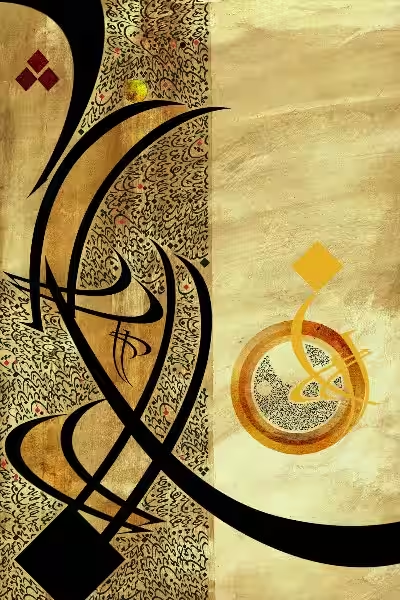
The Arabic language, known for its rich vocabulary and intricate grammar, offers a fascinating lens through which to explore the nuances of human perception. The word “نظر” (nazar), meaning “look,” carries a depth beyond mere visual action. It encapsulates a spectrum of meanings, from a fleeting glance to a profound, introspective observation. This article delves into the multifaceted significance of “looking” in Arabic, examining how it shapes our understanding of the world, our interactions with others, and even our own internal processes.
Looking as a Window into the Soul: Unveiling Emotions and Intentions
In Arabic culture, the act of “النظر” (nazar) carries a weight that transcends its literal meaning. A prolonged gaze, particularly between individuals, can convey a multitude of emotions, from admiration and affection to suspicion and disapproval. The direction and intensity of one’s gaze can be a powerful tool for communication, revealing unspoken feelings and intentions. For instance, in traditional Arab societies, a man might avoid direct eye contact with a woman as a sign of respect, while a child might look up at their parent with a mixture of curiosity and dependence.
This inherent connection between “النظر” (nazar) and emotional expression is reflected in the language itself. Phrases like “نظر بعين الشفقة” (nazar bi-‘ayn al-shafaqah), meaning “to look with compassion,” or “نظر بغيظ” (nazar bi-ghayz), meaning “to look with anger,” highlight the intricate relationship between gaze and inner states. Understanding the subtle nuances of “النظر” (nazar) is crucial for navigating social interactions and interpreting the unspoken language of emotions.
Looking as a Means of Knowledge and Understanding: From Observation to Insight
Beyond its social implications, “النظر” (nazar) plays a vital role in the pursuit of knowledge and understanding. The Arabic word “مُتَأَمِّل” (muta’ammil), meaning “contemplative,” embodies the act of looking with intention and depth. A contemplative gaze goes beyond simply seeing; it seeks to unravel the underlying patterns, connections, and meanings within what is observed.
In the Islamic tradition, “النظر” (nazar) is an integral part of the spiritual journey. Muslims are encouraged to contemplate the wonders of creation, from the intricate details of a flower to the vast expanse of the universe. Through careful observation and reflection, one can gain deeper insights into the divine purpose and the interconnectedness of all things. This emphasis on “النظر” (nazar) as a path to knowledge underscores its importance in seeking truth and understanding the complexities of the world.
Looking as a Catalyst for Action: From Observation to Transformation
The act of “النظر” (nazar) is not merely passive; it can also be a catalyst for action. The Arabic proverb “من نظر في العيب لم ينظر في الفضل” (man nazara fi al-‘ayb lam yanzar fi al-fadl), which translates to “whoever looks for faults will not see virtues,” highlights the importance of looking with a discerning eye. By focusing on the positive aspects of a situation, we can inspire change and foster growth.
Furthermore, “النظر” (nazar) can be a key element in problem-solving. By carefully observing a situation, identifying its root causes, and envisioning potential solutions, we can move towards positive outcomes. In this context, “النظر” (nazar) becomes a tool for creating a better future, guiding our actions and directing our efforts towards meaningful change.
Conclusion: The Enduring Significance of Looking
From its role in social interactions to its importance in spiritual and intellectual pursuits, the Arabic word “نظر” (nazar) encapsulates a multifaceted understanding of looking. It is a powerful tool for communication, a pathway to knowledge, and a catalyst for action. By understanding the nuances of “النظر” (nazar), we gain deeper insights into the complexities of human perception, the rich tapestry of Arab culture, and the enduring significance of observation in shaping our lives and our world.
Frequently Asked Questions: Look in Arabic
What is the Arabic word for “look”?
The Arabic word for “look” depends on the context. Here are some common options:
- نظر (nazar): This is the most general word for “look,” encompassing both seeing and paying attention.
- نظر (nazar): This word implies a more deliberate and focused look, such as when examining something closely.
- شَاهَدَ (shahada): This word suggests witnessing or observing something, often with a sense of importance or significance.
- طَلَعَ (tala’a): This word means “to appear” or “to come into view,” often used when something suddenly becomes visible.
How do I say “look at this” in Arabic?
There are several ways to say “look at this” in Arabic, depending on the context and desired level of formality:
- أنظر إلى هذا (inzir ila hadha): This is a simple and direct way to say “look at this.”
- انظر إلى هذا (inzir ila hadha): This is a more formal way to say “look at this.”
- تفضل إلقاء نظرة على هذا (tafaḍḍal ilqā’ nazrah ‘ala hadha): This is a polite way to say “look at this,” literally meaning “Please take a look at this.”
What are some common Arabic phrases related to looking?
Here are some common Arabic phrases related to looking:
- إلقاء نظرة (ilqā’ nazrah): “To take a look”
- نظر بعين (nazar bi-‘ayn): “To look with an eye” (meaning to look closely)
- نظر بِحَذَر (nazar bi-ḥadhar): “To look with caution”
- نظر باهتمام (nazar bi-ihtamām): “To look with interest”
- نظر بتعجب (nazar bi-ta’ajjub): “To look with amazement”








